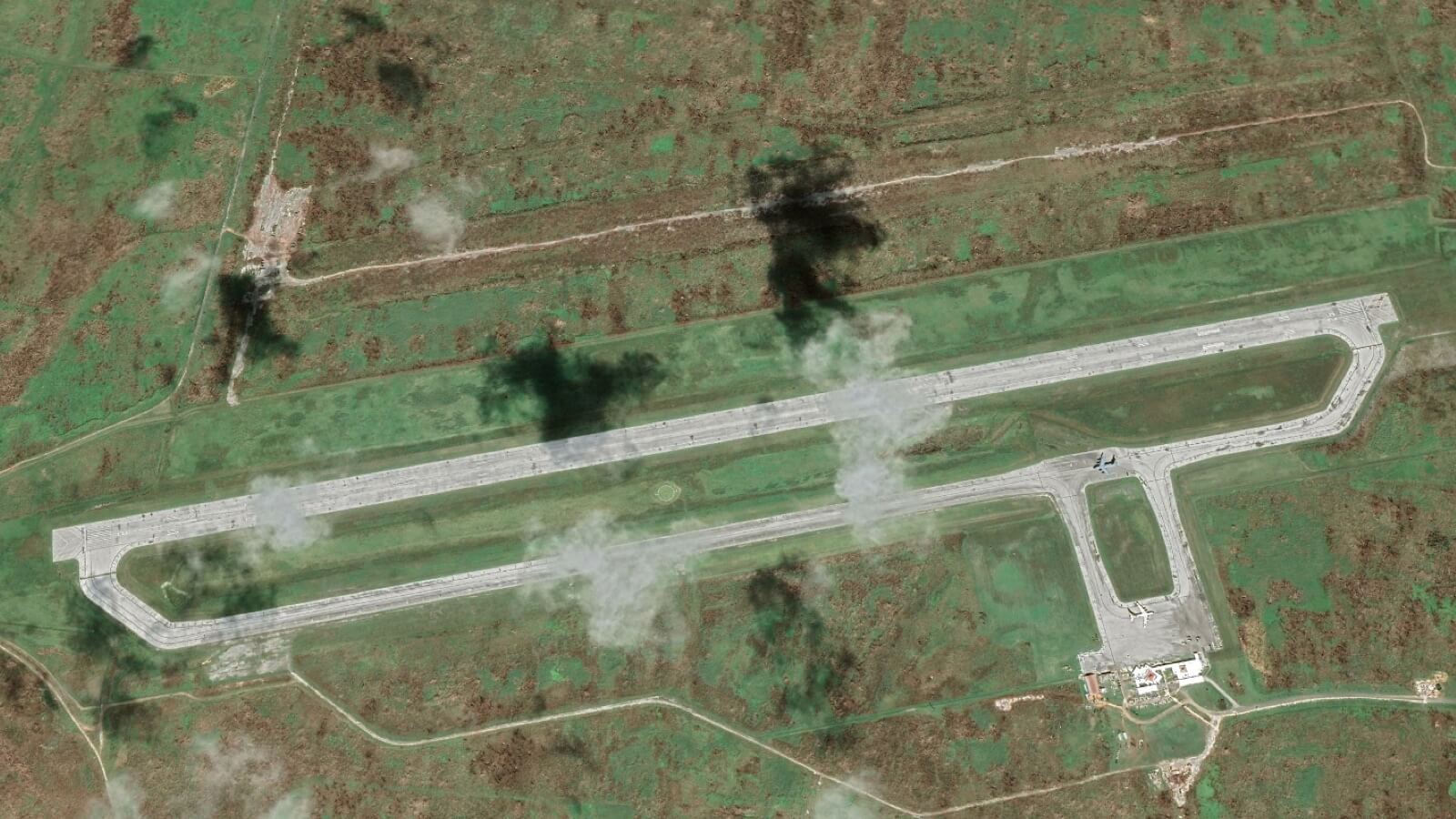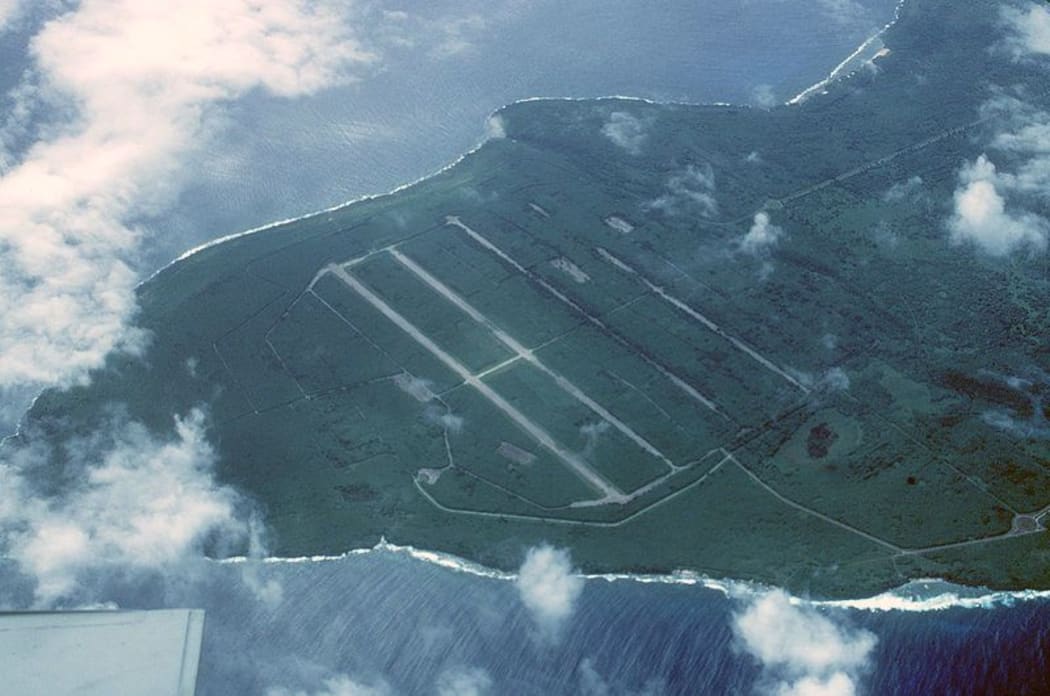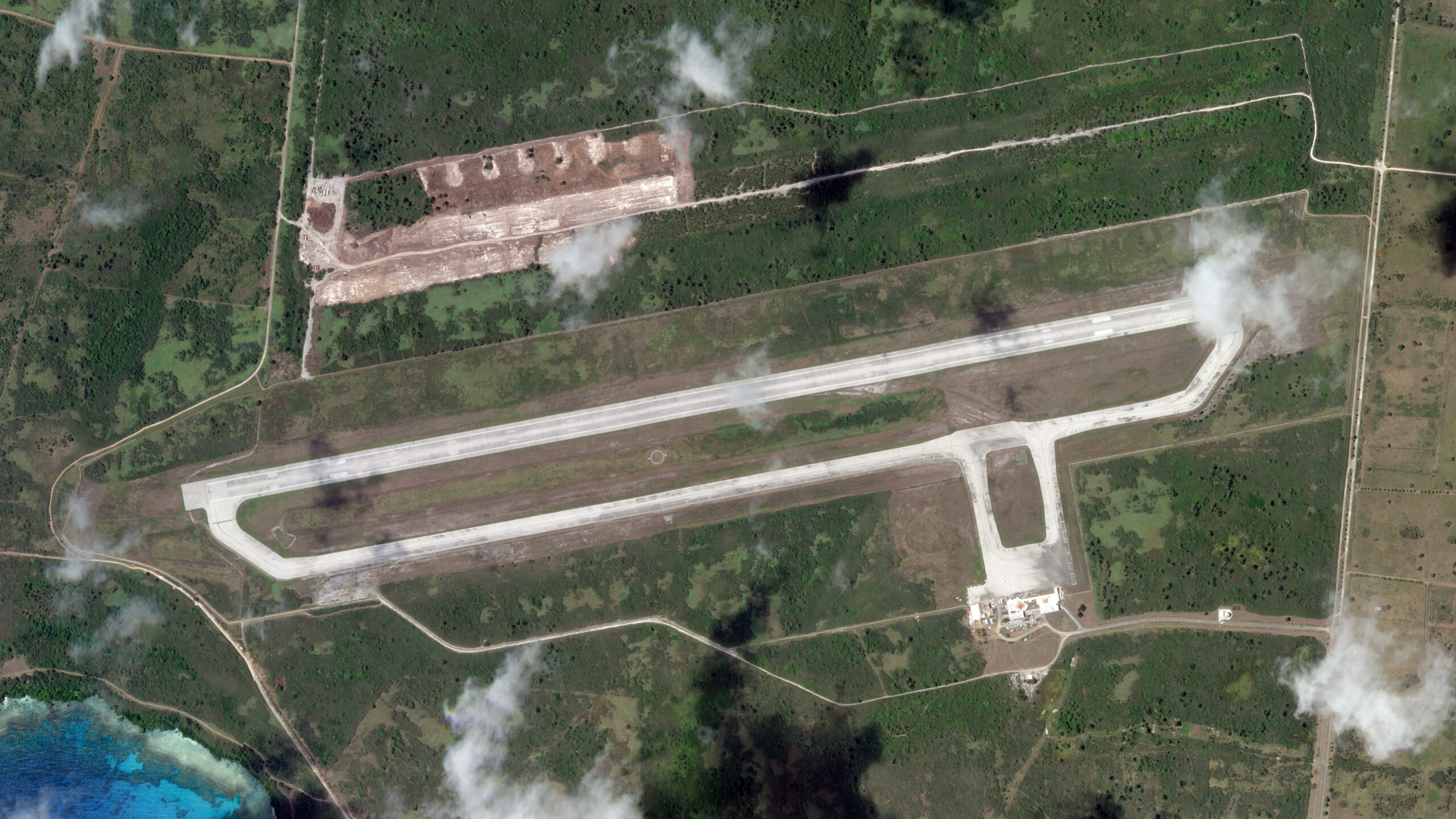Satellite photos show how the US Air Force is reclaiming a WWII-era airfield from the jungle to prepare to dodge Chinese missiles...that last saw major use in WW2 by B-29 bombers in 1944 and 1945.. .
US troops have ventured to remote corners of the Pacific and to bases rarely used since World War II — including the island of Tinian, where they're reclaiming an airfield that last saw major use by B-29 bombers in 1944 and 1945.. .In 2016, the Air Force selected the airport to host a "divert airfield" to support its training and ensure its aircraft could meet mission requirements if access to other airfields in the region was limited or denied.
- Officials broke ground there in February 2022.
- The refurbished runway, just north of the airport's main runway, is meant to support agile combat employment, or ACE, a concept for dispersed operations that envisions aircraft and airmen deploying from main "hub" bases to less developed "spoke" bases.
- ACE is part of Air Force operations around the world, but it was developed with the Pacific in mind.
- "We're going to be clearing out the jungle" on that airfield, Wilsbach said in September.
- "We're going to be resurfacing some of the surfaces there so that we will have a very large and very functional agile-combat-employment base — an additional base to be able to operate from — and we have several other projects like that around the region that we'll be getting after."
- An airfield-development project includes "demolition of World War II-era airfield pavements," clearing and leveling surfaces, and installing drainage, utilities, and secure fencing, the documents say.
- A fuel-pipeline project involves installing storage tanks, pipes, and safety equipment to allow ships to unload fuel for transport to the airfield by pipeline and truck.. .
A storied past, contemporary uses
The Air Force’s Fiscal Year 2024 budget request shows $78 million has been sought for construction projects on Tinian island.
The reclamation project is part of the US military’s Agile Combat Employment (ACE) strategy, which an Air Force doctrine document says “shifts operations from centralized physical infrastructures to a network of smaller, dispersed locations that can complicate adversary planning and provide more options for joint force commanders.”
Much of the US air power in the Pacific is concentrated on a few large air bases, like Andersen Air Force Base on Guam or Kadena Air Base on the Japanese island of Okinawa.
A strike on those bases could cripple the US military’s ability to hit back at an adversary if too much US air power were concentrated there.
And as China, the country the Pentagon identifies as its “pacing threat,” grows its missile forces, the Air Force is looking for places to disperse its fleet to make targeting it more difficult.
According to a 2022 paper from the Air Force’s Air University, “ACE helps mitigate (Chinese) threats by dispersing forces throughout the theater using hub-and-spoke basing configurations, offering the service unpredictability and requiring the People’s Liberation Army to expend more missiles to reduce US Air Force airpower effects.”






No comments:
Post a Comment